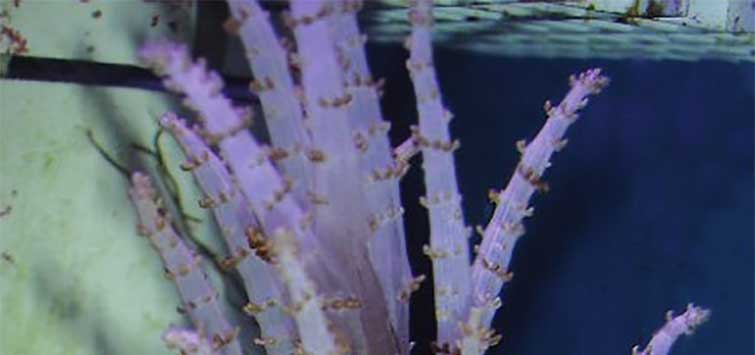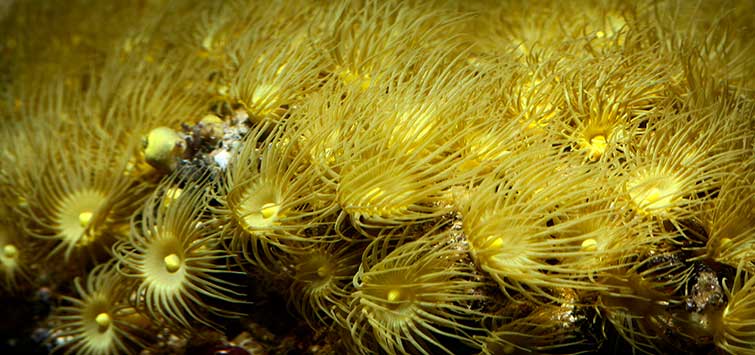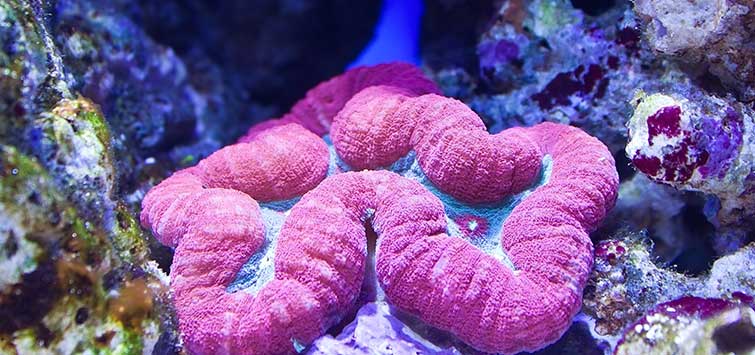Studeriotes longiramosa
Common Names: Christmas tree coral, snake locks coral, Medusa coral, pine tree coral
Phylum: Cnidaria
Class: Anthozoa
Order: Alcyonacea
Family: Alcyoniidae
Range: Indo-West Pacific, with the Tropical West Pacific—specifically Indonesia, Singapore, and the Philippines—providing most specimens
Natural Environment: This coral is not commonly found but is easily harvested, as it occurs in shallow to medium depths with somewhat turbid conditions having moderate water movement, where it is found firmly “rooted” in soft sand and rubble-bottom areas.
Water Requirements: Calcium 380 to 430 ppm, alkalinity 3.5 meq/l, pH 8.1 to 8.2, specific gravity 1.024 to 1.026, phosphate < .015 ppm, and a temperature range of 76° to 83°F (24° to 28°C).
Captive Care
These are occasionally available in the trade but not overly popular, as they are a difficult coral to maintain long-term. They’re no doubt an oddity; this coral needs to have its base firmly planted in a substrate composed of fine sand, where it will send out tendrils to anchor itself. Low light and moderate to good water movement suits it well.
Since this species is non-photosynthetic, it requires feeding in captivity. During daylight hours, it will expand upward to form a tree-like structure, and its branches with small polyps should be fed meaty-type foods like rotifers, newly hatched brine shrimp, or a zooplankton-type product at least twice daily. During evening hours, the branches are folded inward and pulled down into the column as it retracts for the remaining nighttime hours, almost like an anemone retracting its tentacles.
Take note, as these corals have a poor record of survival in closed systems, and unless you’re willing to provide their exacting needs, they will slowly waste away—in fact, starvation is the number one killer of this species in aquaria. There is no known record of successful propagation, in fact just the opposite is the case, as they seem to deteriorate quite quickly when cuttings are taken. However, they are not overly fussy about water quality, as more turbid or murky conditions suit them quite well. Nevertheless, the water quality parameters listed below are recommended.

.png?h=595&iar=0&w=2781&hash=5FD5E69473BCC22199FBFA2FB71B6033)



